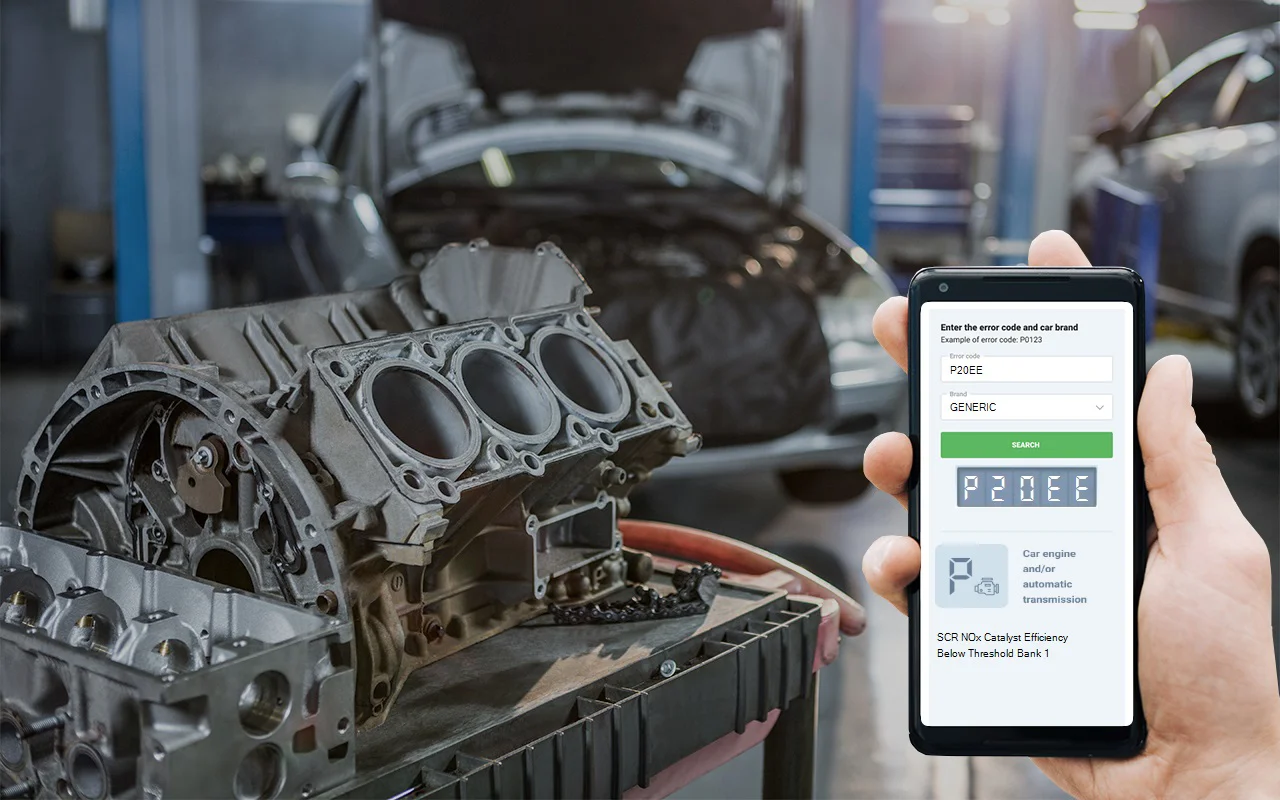When you see a P20EE code pop up, what your PCM is really telling you is that the SCR NOx catalyst on bank 1 isn’t pulling its weight. In real-world terms, that means your truck’s system for scrubbing out nitrogen oxides (NOx) from the exhaust-using that DEF (Diesel Exhaust Fluid)-just isn’t doing the job. The SCR system is designed to inject DEF into the exhaust stream, turning those harmful NOx gases into harmless nitrogen and water. The PCM monitors this process with a handful of sensors, and when it spots a problem, it throws the P20EE code. I can’t stress enough how vital this system is if you want to stay compliant with emissions rules and keep your diesel running smooth. Ignoring it? Not a good plan.
DTC P20EE
Causes of the P20EE code
From experience, I can tell you there are a handful of usual suspects when it comes to sa 16 dtc p20ee00. Most often the issue is with one of the sensors-either the O2, NOx, or exhaust gas temperature sensor. But I’ve also seen problems caused by:
- Contaminated or low DEF fluid (sometimes people accidentally put the wrong fluid in, or water gets in the tank)
- DEF injector failure (the part that sprays DEF into the exhaust)
- SCR catalyst itself failing
- Exhaust leaks before or near the sensors
- Electrical issues like damaged wires or poor connections
- Software glitches in the control module that need an update
In cases like this, it’s usually a sensor or DEF-related problem, but it’s important to check everything to be sure.
Symptoms of obd code P20EE
If you’ve got a dtc p20ee, here’s what you’ll probably notice: the check engine light will be on, and you might see warning messages about the exhaust system on your dashboard. Sometimes the engine will go into a reduced power mode (derate), so you’ll feel a drop in performance. You could also notice worse fuel economy, and in some cases, the DPF (diesel particulate filter) won’t regenerate like it should. If you’re seeing any of these, it’s a good idea to get it checked out right away.

Diagnosis steps for the P20EE trouble code
Here’s how I usually tackle a dtc p20ee00 volvo truck. First, I recommend starting with the basics: check the DEF fluid level and make sure it’s the right type-contaminated or low DEF is a common culprit. Next, inspect the DEF injector for any signs of clogging or failure. Then, I move on to the sensors: check the NOx, O2, and exhaust gas temperature sensors for proper operation and look for any obvious wiring damage or loose connections. It’s best to have someone assist you when checking for exhaust leaks-listen and feel around the joints and sensors (just be careful, the exhaust can be hot). If everything looks good so far, I’ll use a scan tool to monitor live data from the sensors and see if anything’s out of range. Finally, I check for any technical service bulletins or software updates for the control module, since sometimes a reflash can solve the issue. Don’t forget to inspect the SCR catalyst itself for damage or contamination if all else fails.

Common Mistakes when dealing with the P20EE engine code
Honestly, one of the biggest mistakes I see is jumping straight to replacing the SCR catalyst without checking the sensors or DEF system first. People also sometimes overlook simple things like a loose connector or a small exhaust leak. Skipping the step of verifying DEF quality is another common error. It’s easy to get tunnel vision and miss the basics, so always start simple before moving to the expensive stuff.

Seriousness of the obd2 code P20EE
This is a serious hazard if ignored. Not only can it lead to your engine going into limp mode (which can leave you stranded or unable to accelerate properly), but it can also cause long-term damage to the SCR system, sensors, and even the DPF. You don’t want this kind of trouble on the road-things can go south quickly if overlooked. Plus, driving around with high NOx emissions isn’t just bad for the environment, it can get you in trouble with emissions testing and local regulations.
Repair options for dtc P20EE
Here’s what I personally recommend for fixing volvo dtc p20ee00, based on what I see most often in the shop:
- Top off or replace the DEF fluid if it’s low or contaminated
- Replace any faulty NOx, O2, or exhaust gas temperature sensors
- Clean or replace the DEF injector if it’s clogged or not working
- Repair any wiring or connector issues you find
- Seal up any exhaust leaks near the SCR system
- Update the control module software if there’s a known issue
- As a last resort, replace the SCR catalyst if it’s confirmed to be bad
It’s best to follow the OEM diagnostic steps and confirm the root cause before replacing any expensive parts.
Conclusion
To sum it up, P20EE means your diesel’s SCR system isn’t cleaning up NOx emissions like it should. It’s a high-priority issue that can lead to bigger problems and even leave you stranded if ignored. The most reliable way to fix it is to start with simple checks-DEF fluid, sensors, wiring-and only move on to the SCR catalyst if you’ve ruled everything else out. Don’t put this off for later; acting quickly is the best way to avoid costly repairs and keep your vehicle running safely and cleanly.




